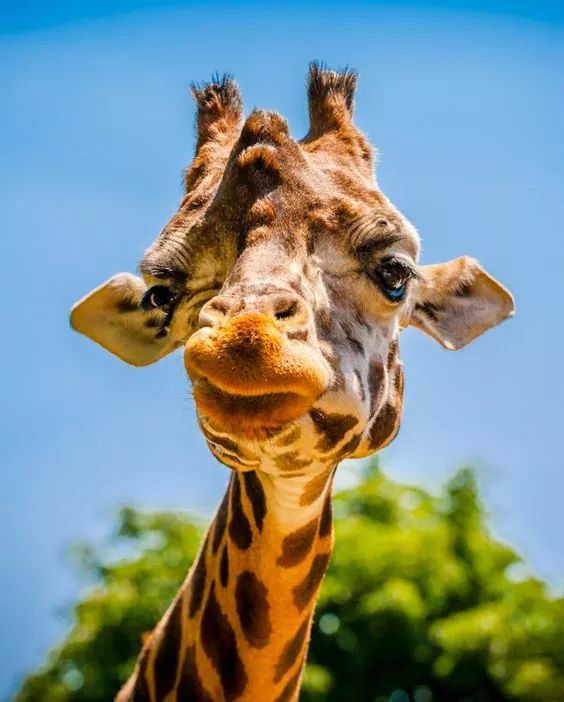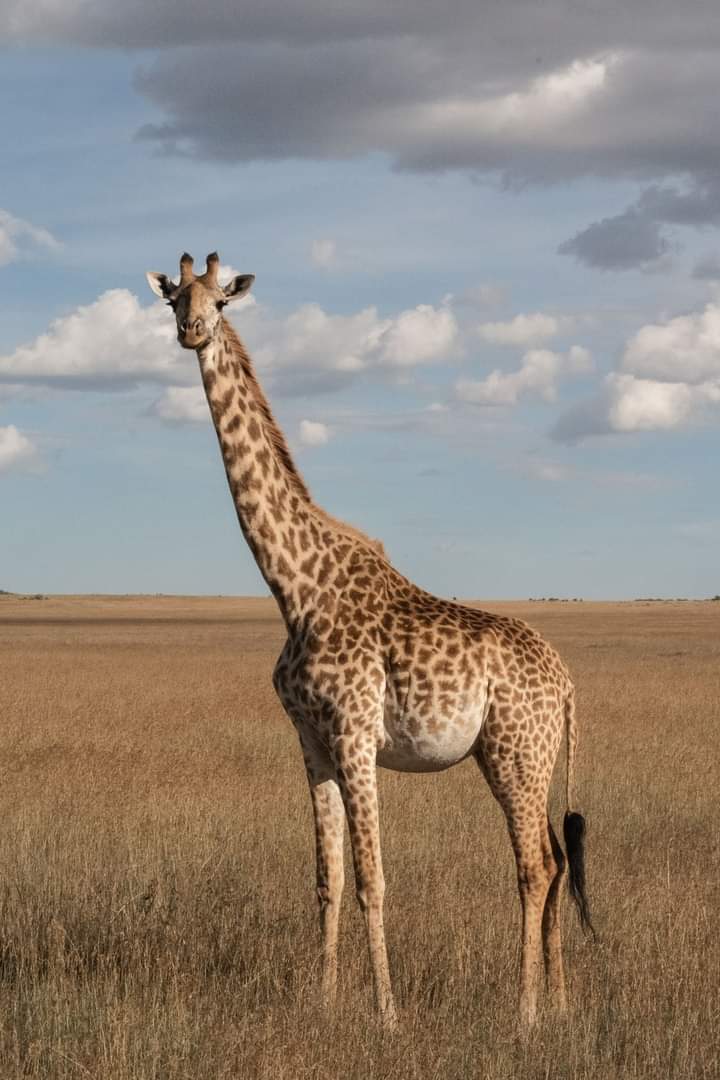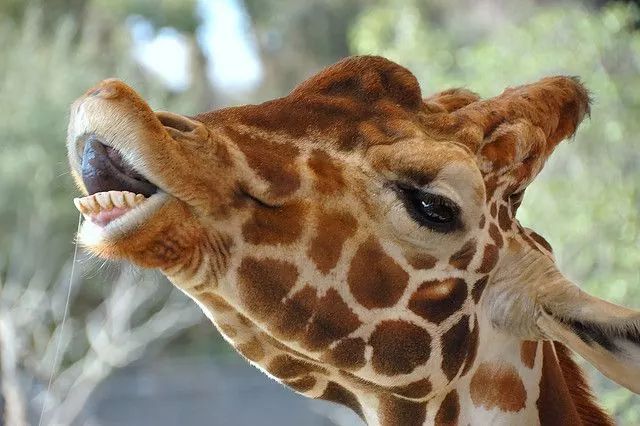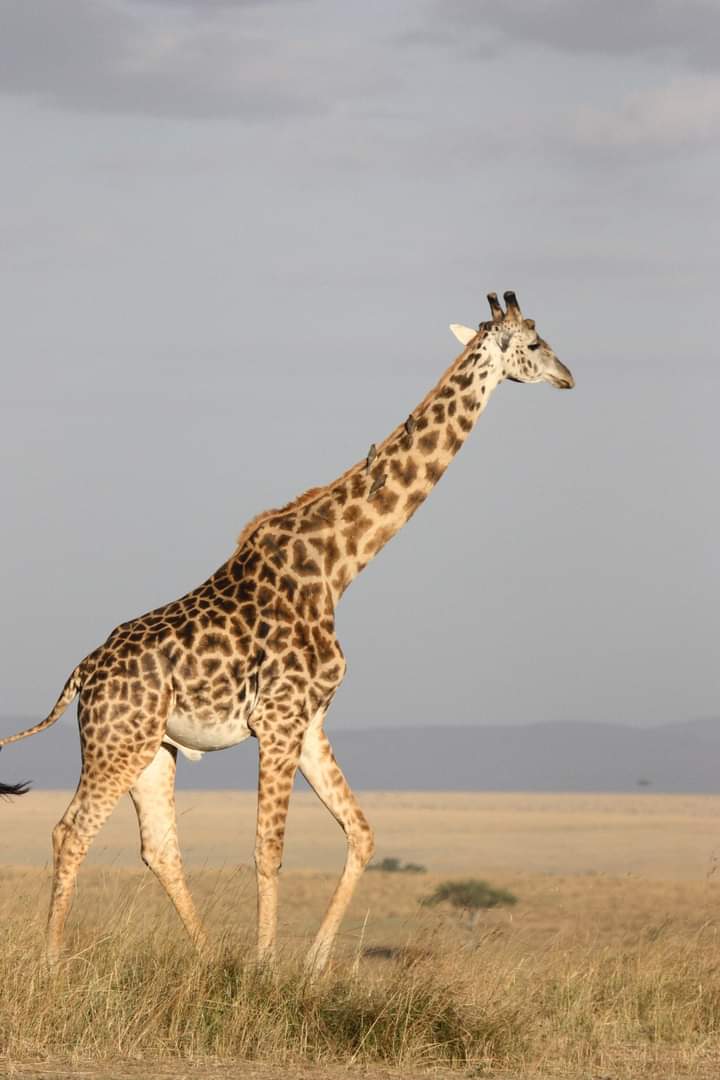
African Giraffe (Giraffa) is an African artiodactyl mammal, the tallest living terrestrial animal and the largest ruminant. It is traditionally considered to be one species, Giraffa camelodpardalis with nine subspecies.
Phylum: Chordata
Genus: Giraffa, Brisson
Kingdom: Animalia
Order: Artiodactyla
The lifespan of African Giraffes is between 20 to 25 years, they also have the longest gestation period of around 14 to 15 months, They usually give birth to one calf at a time, although twins are possible. African Giraffes spend most of there lives standing up, even giving birth, sleeping. Its baby can stand up and run within an hour of being born, its speeds upto 35mph when running.
It has a longest tongue of about 20 inches and are darkly coloured. They consume over 75 pounds of leaves in a day. Its new born is taller than most humans. They take long to drink, its heart weighs approximately 11 kgs and it’s the biggest of any land mammals. Just like fingers prints, no two Giraffe have the same spot pattern.
This is not one of those unusual little occurrences in nature, this is completely normal. Mature male African giraffes (bulls) will often grow an extra ‘ossicone’ (name for those ‘horns’ — not actual horns), but this ‘ossicone’ is not made of cartilage like the real ones — this one is actually a Calcium deposit that makes its head heavier. Bulls need heavier heads for fighting.

The legs of adult African giraffes are taller than most humans. They are the world’s tallest living animal, and to reach those great heights they grow pretty quickly! A calf can grow an inch a day.
Did you know that the scientific name of a girrafe is G. Camelopardis derived from camel and leopard coz some people thought it’s a cross breed between a camel and leopard.
- Camel – long neck
- Pardalis from pardus – leopard. That is spotted like a leopard
A giraffe’s patches contain a high concentration of sweat glands, helps it control its body’s heat — it gets rid of extra body heat because on the surface are many blood vessels.
African Giraffes females do not fight; only the bulls and they can live together in a herd of cows and calves, and only fight when they want to breed. The cow does not come into season — they can breed anytime, but prefer to give birth in the rainy season.
When bull’s fight, they do not use their ossicones (those horn-like protrusions) to fight. They use their heads and neck to slam into their opponent’s body to unbalance him so that he falls to the ground. For this reason, male African giraffes have heavier heads — usually have more than two ossicones (like an extra one on its forehead) (with neck and head) are a strength thing. The one to lose its balance and sometimes fall, is the loser and the bull still standing is the winner.
- By the way, those extra ossicones (they can have up to five) are actually Calcium deposits.
The giraffe’s range extends from Chad to South Africa.
Between 1985 and 2015, we lost 40% of our wild African giraffes population and only in the last few years are greater efforts made to come to the rescue, although they are already extinct in 7 countries.
African Giraffes in the 19th Century were almost hunted to extinction and in 1906 they were one of South Africa’s rarest species, but thanks to their great conservation efforts they now boast a healthy population — still vulnerable, but a lot more stable.
The greatest population is the subspecies, the Maasai giraffe with almost 38, 000! They are found in central and southern Kenya and Tanzania. Some of these great giraffes (Maasai’s have the darkest patches found on any giraffe) have been trans-located into Rwanda. The greatest number of giraffes are found in Tanzania, but sadly those numbers are falling due to habitat loss as Tanzania has seen a dramatic increase in human population and the poor giraffe has been squeezed out, especially in areas surrounding the Masai Mara National reserve.
- They are also victims of poaching for bush meat. An international conservation project is underway to educate and collect as much scientific data as possible about these fragile animals.
Maasai giraffes are classified as a ‘vulnerable species’.
Out of all the African giraffes, Maasai giraffes may be the easiest to identify. Besides having darker patches (a richer brown) Maasai giraffe also have the most jagged edges on their patches and they are the largest of all the giraffes. Their patches go all the way down their legs to their hooves.
African Giraffes: World’s tallest mammal
African Giraffes are undoubtedly the world’s tallest mammal and by extension, the tallest species in the animal Kingdom. The adult is about 5.5m, taller than 3 adult men joined together. The height plus an excellent eyesight are used for sighting predators (lions and hyenas) from a distance. The leg alone is about 6 feet long and can run 35 miles per hour for short distances.
The origins and a few more basic facts…
Girrafa camelopardalis as the scientific name, was coined by the Greeks to mean “camel with leopard spots”. Lamarck’s theory of evolution of ‘use and disuse’ held that the neck became longer due to the constant use of it as a necessity to feed from tree tops (browsing). This was, however debunked since the law postulated that such physical traits were inherited by the offerings.
It’s an herbivore and has a long tongue of about 53cm (4.5 feet, 20.8 inches) for aiding its browsing.
They get water from the plants they feed on and only drink water once in a few days. These animals spend most of their lives standing up — they even give birth standing up.
African Giraffes are more unique than we think.
Like human fingerprints, giraffes have different pattern of spots, no two individuals have same pattern. Both males and females have hair covered horns called ‘ossicones’.
A group of giraffes is called ‘towers’, usually about 15 members led by an adult male. The male is called a bull and the female, a cow, while the baby is called a calf. Its lifespan is about 25 years in the wild and 40 years in captivity.
Giraffes do not have territories; they have home ranges, and the males only fight for breeding rights — this can be at any time as giraffes do not have a breeding season.
The fighting of giraffes is called ‘necking’. Mature males have less hair than the female giraffe.
The giraffe has the largest, longest and tallest points of most animals. Here is another…
A giraffe has the largest heart of any land animal (bigger than the biggest land animal, the elephant) — it is 24 inches long.. This heavy organ weighs 25 pounds (11 kg)!
As you can see, a giraffe has one heart, as some believe they have two hearts.

Giraffes have no upper, front teeth. They have the same amount of teeth as we do — 32 permanent teeth.

Although giraffes do not drink often because they get most of the water they need through the food they eat, but in dry times we tend to forget about them and think they will cope. They also suffer and have to travel great distances to find waterholes or rivers.

